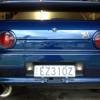Rb26 Head Rear Oil Drain
Announcements
-
Similar Content
-
Latest Posts
-
price drop $1000 gbox $400 clutch
-
yeah, mechanically, it is probably do-able, off the top of my head, there would be the transfer case, which I believe will bolt up to the rear of the RWD transmission, the shorter rear tail shaft. A front drive shaft, front diff, engine upper sump, front drive shafts, front hubs and front AWD struts (they are shaped around the front drive shafts), LCAs (at the very least from the front suspension) oil cooler. You might want the rear diff from an AWD too, so you can be certain the front and rear diff rations are identical. Who knows what brackets and mounts you might need. So a whole doner car might be the best option if you need to maintain RHD. Then actually making it work, that would be a whole different story.
-
Take the fall as a warning sign for future endeavours Stay safe mate
-
hi mate, HKS cooler piping still available by any chance?
-
Is your clutch fork also preloaded like OPs was?
-










Recommended Posts
Create an account or sign in to comment
You need to be a member in order to leave a comment
Create an account
Sign up for a new account in our community. It's easy!
Register a new accountSign in
Already have an account? Sign in here.
Sign In Now